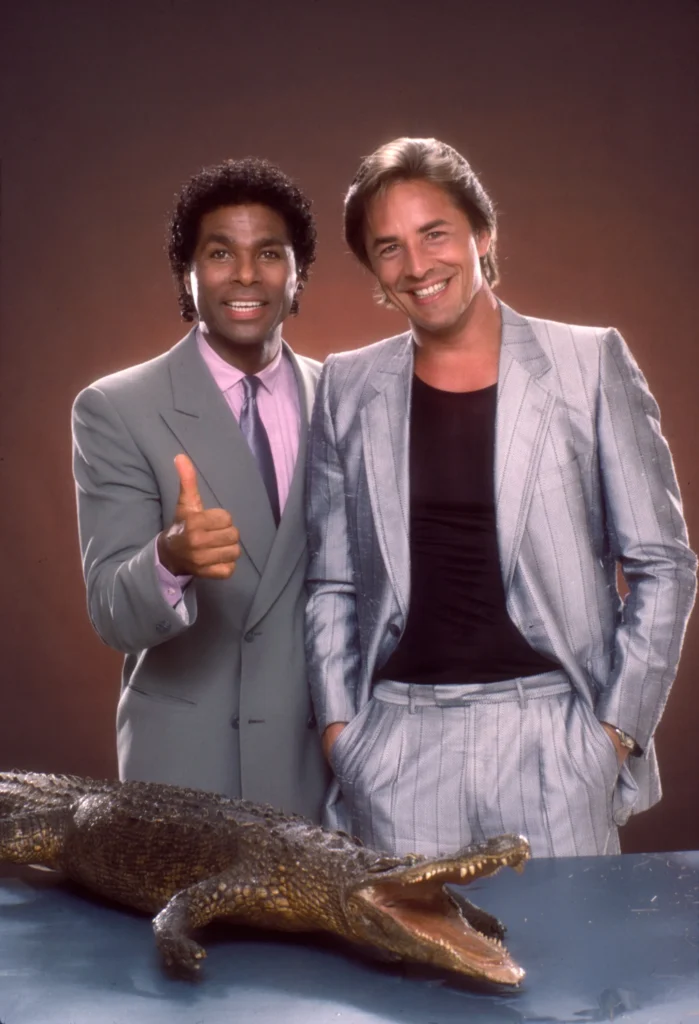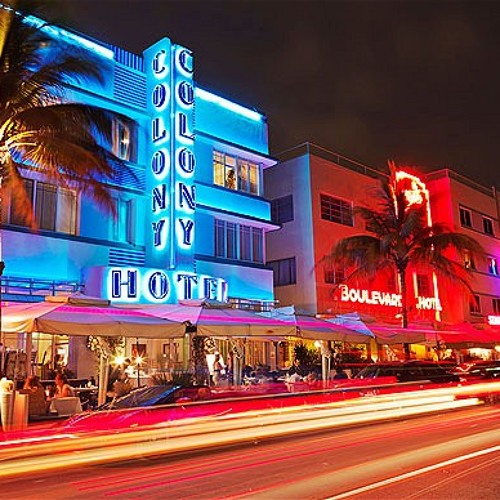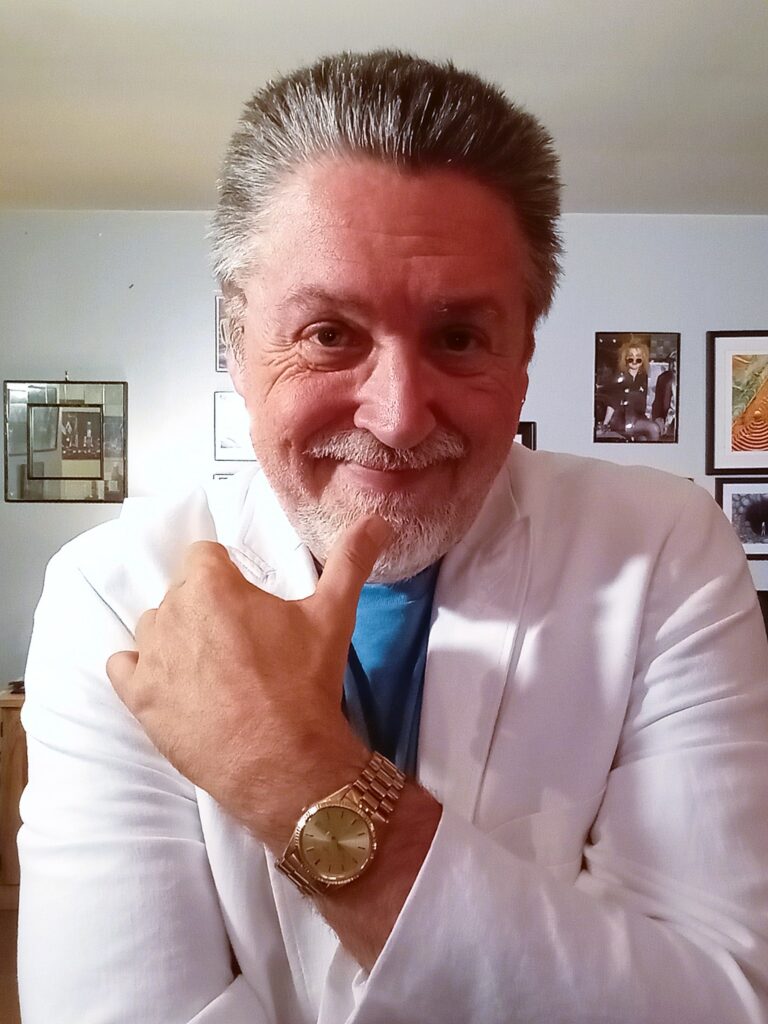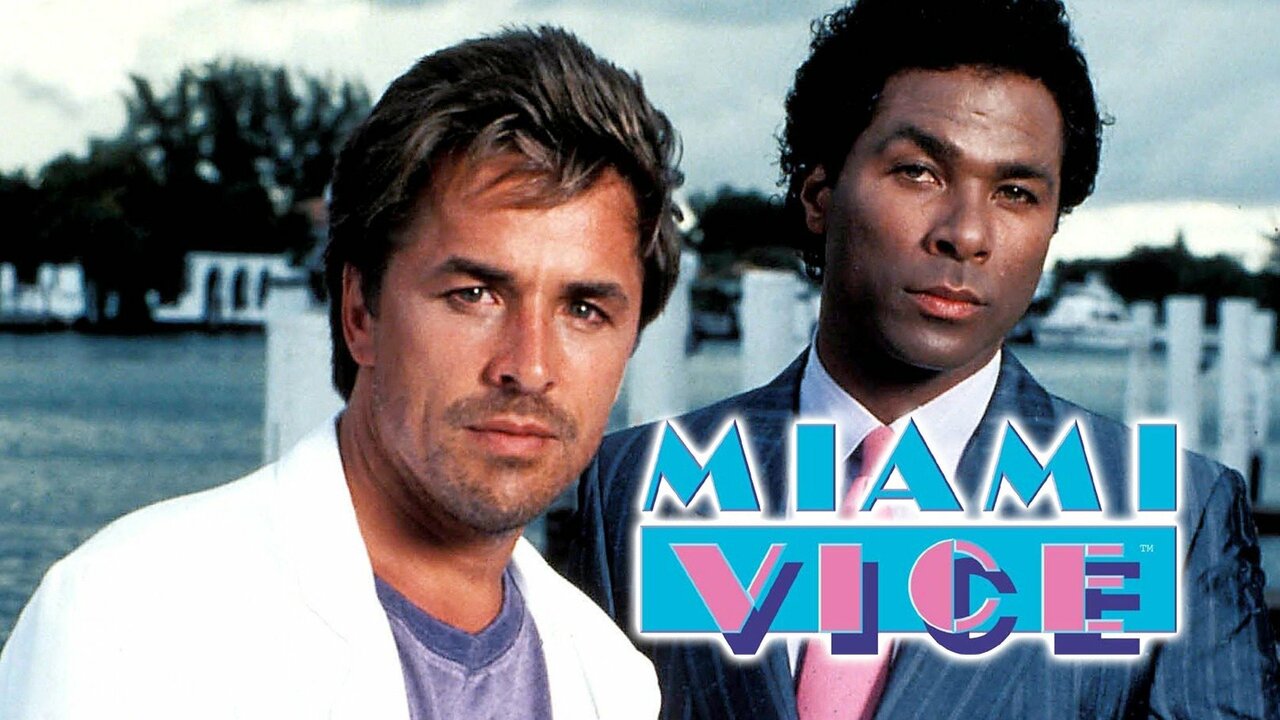Today marks the 40th birthday of Miami Vice. The show had an impact on fashion and music. It forever changed the landscape of television, movies, and police dramas. It also changed the city of Miami and may show us a path for art to change our current social landscape. We may have to do more than just say no earth tones, we may have to say no to fear and to hate.
The early 80’s. We are a scant few years away from a 20 year military conflict overseas. In a period of six months from April to October of 1980 over 125,000 immigrants landed on the shores of South Florida from Cuba in what my child’s history books call the Mariel boatlift. That same year 5,000 Haitians arrived on a rickety leaking large vessel and sought asylum in Miami. They were denied entry and put into detention centers. A civil rights lawsuit was swiftly mounted allowing the refugees entry into Miami. More Haitians, referred to as boat people, would come into Miami seeking a better life.
According to a 2020 article on Medium, “The Cuban and Haitian refugees were sequestered in camps, under freeways and in make-shift slums. Then President Jimmy Carter had offered little to alleviate the situation and find a reasonable solution. The same problems persisted and followed Ronald Reagan post-election within days of taking office.”
Miami was already a failed resort town. Most of the art deco hotels and storefronts along South Beach were abandoned. Crime was on the rise with drug and human trafficking rampant. 1/3rd of all undocumented monies in the US were happening in Miami. The figures of illegal money flowing into Miami from organized and corporate crime was over 5 billion USD which was more than the cash reserves of 12 Federal Reserve banks combined according to Time Magazine.
What else was going on in Miami at the time? Police brutality of black people was on the rise and the government’s failing war on drugs was leading to organized crime fighting deadly wars for market share of the mountains of cocaine white middle class people were yearning for.
But the focus on what the plight of Miami and the nation’s cities leading to “white flight” from the cities? Immigration and immigrants seeking a better life was the problem. We marginalized them, vilified them, and blamed them despite all the other factors affecting us as a nation. The Haitian people and the Latino people coming to the shores of Miami legally were considered a crisis. They were painted as escapees from prisons, mental institutions and doing dark and nefarious things while the real problem was found in corporate and government policies gutting urban landscapes and an emphasis on a failed drug war. How much of this is sounding familiar?
What transformed Miami? A television show that many called MTV Cops! But it was so much more.
Reimagining Miami

The creators of the concept of Miami Vice were captivated by the undocumented money flowing through Miami and they had a compelling what if. What if law enforcement confiscated the Ferraris and Armani suits of corporate criminals and drug lords? What if those confiscated goods were given to underpaid $400 a week cops to go into the brightly colored neon world of opulence that made victims of the people of the streets and fight those powers against impossible odds?
Michael Mann came into the project and wanted to see change with this what if. There would be no earth tones on the actors. A cop show that would not be dark and gritty but brightly lit nightscapes and pastels. He saw the art deco backdrop of South Beach as a co star and the wardrobe of dilapidated dimly colored buildings would just not do.
Without permits Mann would have the crew paint the abandoned art deco buildings in bright pastels and add some neon and the interiors were made to look like glamourous hotel lobbies, nightclubs, and opulence.
Extras wandered the beaches in carefully crafted vision of bikinis, Armani suits, gold watches, and retirees and multiethnic people in a lively space. They were also pawns in a dangerous game of a world run by drug cartels, bankers, and competing law agencies fighting different crimes.
In the episode Evan we wrote about where we uncovered the queer coding of Miami Vice, we see the Vice cops having one priority. They wanted to keep assault rifles off the streets to prevent mass shootings. Sound familiar? But the agency Evan was working undercover for did not care about the people on the streets of Miami, they were concerned about the information they could obtain from the gun trafficker about crimes that would help them in their war on drugs and terror. He was a protected entity and so were his guns.
The colors were bright, the lights were on, but the integrated citizens of South Beach and Miami were in danger. The immigrants were not the bad guys, they were the neighbors in the community that were often victims of the power brokers in the suits and the fancy cars.
Episode after episode the $400 a week cops fell in love, made friends with immigrants and minorities, and played gin rummy with elderly retirees on South Beach patios. They did their best to level the playing field for the residents. Week after week we also got to see a glamorous and colorful city with a thriving bright scene and business scene that did not exist…until it did.
Art Imitates Life

In less than a year of the release of Miami Vice perceptions of Miami as murder city and the home of dirty criminal immigrants changed. The Miami Herald wrote, “The national perception of Miami has markedly changed, and though the triple stigmas of crime and drugs and refugees have not vanished, they have been overwhelmed by visions of fast Porsches and neon nightclubs and ripe young flesh on the beach.”
And the industries that had left urban centers wanted to cash in on the thriving industry they were seeing every Friday night on NBC. Buildings in downtown Miami featured in the opening credits of show swiftly became top dollar offices for businesses to clamor for presence in. The formerly abandoned art deco buildings along South Beach, which the historical society fought for preservation of when the city just wanted to tear it down for low cost condos, became prime real estate for hotels and nightclubs and restaurants.
The migrants? Many became a workforce and others opened up their own businesses.
40 years later Miami is still known for it’s nightlife and has thriving tourism and industry featuring a 3% unemployment rate which is below the national average 4.2%. It is not just tourism, it is banking, international trade, life and medical science, aviation, maritime services, data, and so much more.
But as we know, it is not perfect there or in the US in general. The median household income in the Miami metro area was $70,769 in 2022, while the median household income in the United States was $74,580 in 2022. There is a gap but it is small one.
Art and Perception
Mann did not intend to revitalize Miami, but he wanted to create art in a vibrant backdrop where a television show used fashion, music, and architecture on a cinematic scale. For a time we all wore pastels and stopped shaving every day. And though fashion and music comes and goes, a city found revitalization and people once vilified, due to the Cuban Adjustment Act, found a path to citizenship and represent just under 30% of Miami’s population. They are an important voting block and an integral part of not only the city of Miami, but the US.
And the Haitians? The northern portions of the Miami metropolitan area have the highest concentrations of Haitian US citizens in the country, including Broward County and northern Miami-Dade County. Over 300,000 of the 500,000 Florida Haitian citizens are in that region.
These important voting blocs, neighbors, and citizens found their way in a city that grew because of life imitating art.
Is there something we can learn as we have come out of a 20 year military conflict and vilify Latino and Haitian immigrants once again? Can investment in infrastructure and industry turn a lost population into citizens, neighbors, and friends as opposed to schools and universities having to close out of fear seeped in unfounded accusations?
What changed in Miami was ultimately perception. The petrol in the fuel of that machine was the arts.
Maybe Springfield Ohio does not have a hit show being filmed there, but we have imaginations that can create perceptions and realities. The reality and the possibilities rely on us.
Imagine Making a Difference!

In the last 7 days I have had 2 emergency surgical procedures. Now more than ever I could use your help to keep doing this work. I need your imagination and help:
1. Tip me! I need your support!

2. Share this column with friends and give it a comment. It helps the algo a lot!
3. Become a Members Only Patreon! In the Patreon I will have unfiltered rants, exclusive content, free PDF copies of the upcoming quarterly magazine, and more.
4. Go to our store and buy the print magazine! It is art, news, and nostalgia that matters!
Thank you for your support and taking the time to read this.
Stay Totally Awesome! Stay true to you!

Leave a Reply